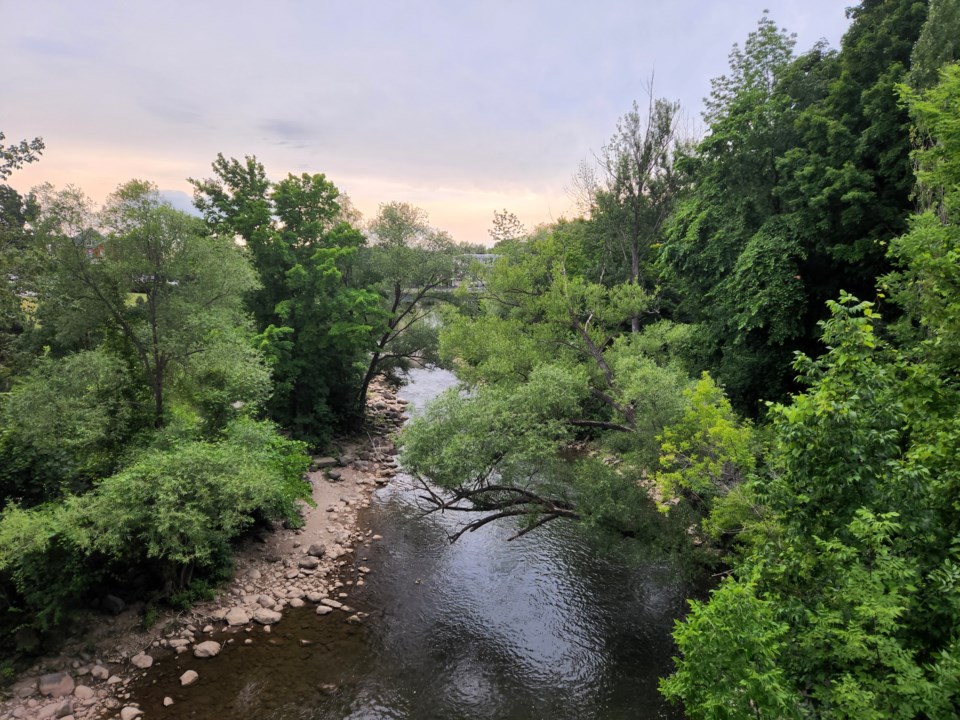A draft drainage master plan for the Town of The Blue Mountains forecasts tens of millions of dollars of potential future expenses for the community.
At its committee of the whole meeting on Feb. 21, council received its first glimpse of the drainage plan, which has been in the works for some time. The report identifies numerous projects, expected to cost millions of dollars, the town could undertake to improve drainage across the community.
At the meeting, council voted to receive the report and directed staff to set up public information centres about the document to be held in March.
“Flooding and drainage issues in the town will worsen if no improvements are made,” Tatham Engineering consultant Daniel Twigger explained to council.
The high-level report (found here) looked at drainage issues across the town, but focused on settlement areas such as: Lora Bay, Thornbury, Clarksburg, Camperdown, Craigleith and the Village area. Drainage infrastructure in the study area consists of a combination of open channels, ditches, watercourses, culverts, storm sewers, overland flow routes, stormwater management facilities, and low-impact development measures.
The report identified dozens of potential solutions to drainage issues and divided those alternatives into two categories: general recommendations and specific individual projects.
If implemented, the general recommendations were predicted to cost between $18.26 and $34.22 million.
“That would be considered a very high-end number,” Twigger said.
The general recommendations included a number of overall steps the town could take to improve drainage including suggestions such as: upgrading storm sewers to current design standards, removing drainage infrastructure from private land to municipal property, adding storm sewers or roadside ditches to areas without them, encouraging the public to implement minor drainage solutions (rain barrels, etc) on their properties and implementing inspection and maintenance for culverts and drainage outlet system in the town. The full list of identified solutions can be found in the presentation here.
Twigger explained to council that the general recommendations would not be feasible everywhere in town and that it was unlikely the town would spend as much as estimated.
The study also suggested a total of 79 individual projects that would improve drainage. The total cost estimate for this aspect of the report was approximately $87 million, however, some of those costs would be the responsibility of neighbouring municipalities, Grey or Simcoe counties or the Ministry of Transportation (Highway 26). The town’s share was estimated at just under $57 million.
In addition, many of the projects would not be stand-alone construction jobs, but would rather be completed as the town does road improvements, renewals and upgrades.
Town staff also explained that the town is actively doing work to improve drainage.
“We’re already putting measures in place through the capital plan to tackle known drainage deficiencies,” said director of operations Shawn Carey.
Coun. Paula Hope asked if the study considered and included snow melt from snow-making operations for ski resorts.
“The impact of snow making will increase,” said Hope.
Twigger explained that snow making was included in the study, however, he explained that melt from snow making does not result in peak flows for the town.
“Summer storms are the governing storms,” said Twigger, who said increased snow making would “extend the melt period” but were “not a peak flow concern.”
Hope also asked if the report looked at the chemicals ski resorts used for snow making.
“It’s something we need to find out now. This is going to be an important issue for us to know about,” said Hope.
Twigger said he was not aware of what the chemical use might be, but would look into that issue. He did note that once snow from snow making operations melts, there isn’t much the town can do.
“Once it enters the watercourse, there’s nothing we can do to treat it,” he said.
Staff will now proceed with multiple public engagement sessions to gather feedback about its recommendations. A virtual public information centre will be held from 5 to 7 p.m. on March 29. An in-person public information centre will be held on March 30 from 5 - 7 p.m. at town hall in Thornbury. Full details can be found here.



